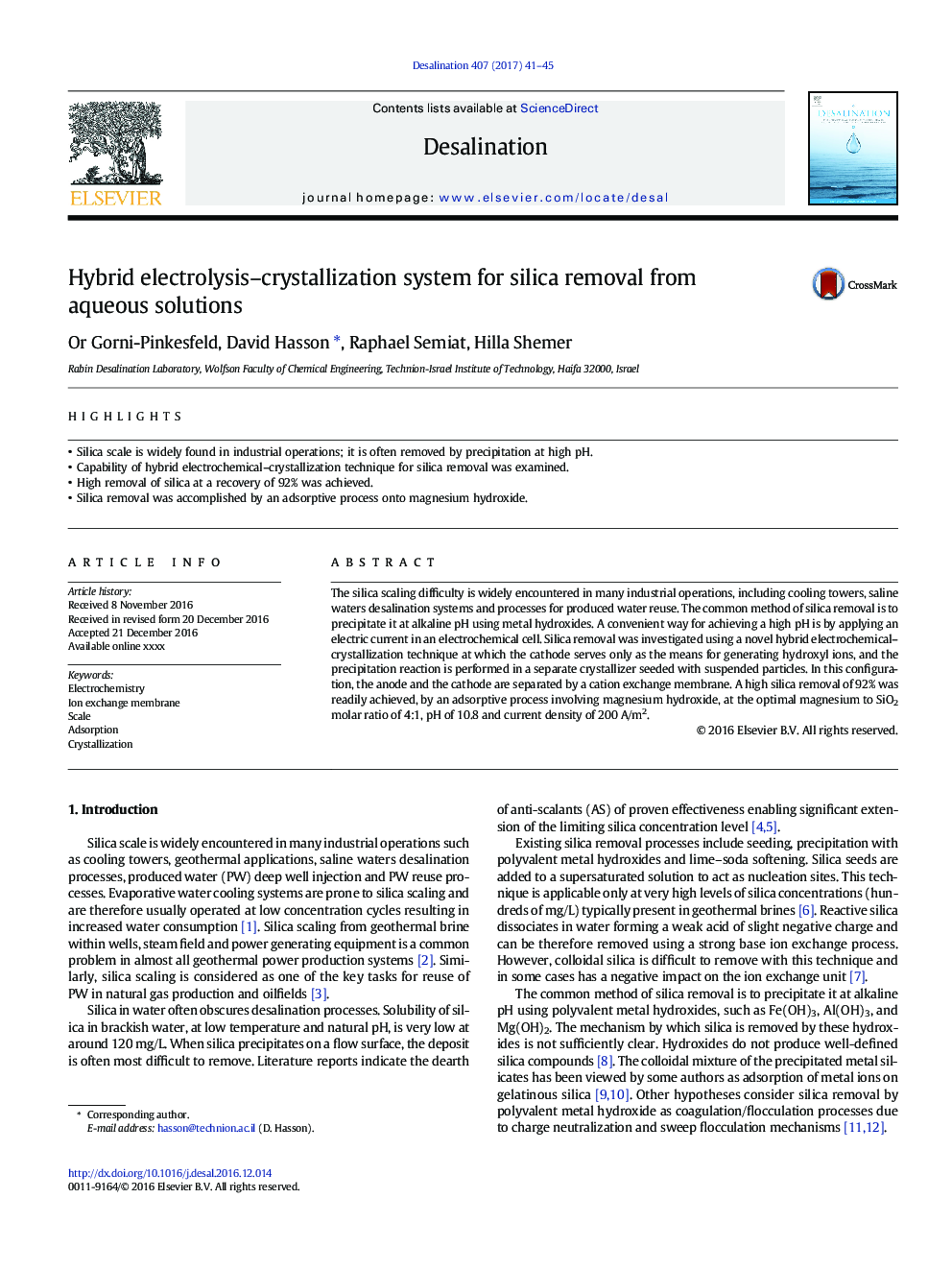| Article ID | Journal | Published Year | Pages | File Type |
|---|---|---|---|---|
| 4987889 | Desalination | 2017 | 5 Pages |
Abstract
The silica scaling difficulty is widely encountered in many industrial operations, including cooling towers, saline waters desalination systems and processes for produced water reuse. The common method of silica removal is to precipitate it at alkaline pH using metal hydroxides. A convenient way for achieving a high pH is by applying an electric current in an electrochemical cell. Silica removal was investigated using a novel hybrid electrochemical-crystallization technique at which the cathode serves only as the means for generating hydroxyl ions, and the precipitation reaction is performed in a separate crystallizer seeded with suspended particles. In this configuration, the anode and the cathode are separated by a cation exchange membrane. A high silica removal of 92% was readily achieved, by an adsorptive process involving magnesium hydroxide, at the optimal magnesium to SiO2 molar ratio of 4:1, pH of 10.8 and current density of 200Â A/m2.
Related Topics
Physical Sciences and Engineering
Chemical Engineering
Filtration and Separation
Authors
Or Gorni-Pinkesfeld, David Hasson, Raphael Semiat, Hilla Shemer,
